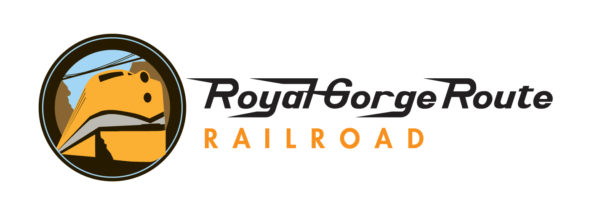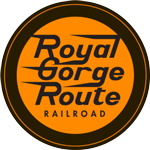Introduction
The Royal Gorge Route Railroad has been a part of the rich history of Canon City for over 100 years. In 1880, the first rails in train car history reached Leadville and sparked the beginning of a new era for the Royal Gorge area. Since then, several locomotives have been a part of Canon City’s railroad, and even to this day some still operate! Take a look at the Royal Gorge history of our train cars and equipment used throughout the years.



Loco 728
Originally numbered 728, this locomotive was one of eight GP-40 locomotives built for the Royal Gorge Railroad between 1967 and 1974. These locomotives, numbered 723-733, represented the most modern power the railroad would own, until its absorption into the Seaboard System in 1983, where it ran throughout the Southeastern U.S. as Seaboard System 6648 until merging with Chessie in 1986 to become the CSX Railroad Corporation.

After 6 years, 6648 was acquired for a rebuild to serve a new life hauling commuter passengers between Washington D.C. and Northern Virginia communities on the newly formed Virginia Railway Express. It was during this last rebuild that the locomotive was renumbered to V20, serving that line until late 2012 before coming to Colorado to proudly haul thousands of passengers through the majestic soaring cliffs of the Royal Gorge.
Loco 402-403

The EMD F7 was a diesel-electric locomotive produced between February 1949 and December 1953 by the Electro-Motive Division of General Motors and General Motors Diesel. Although originally promoted by EMD as a freight-hauling unit, the F7 became one of the most iconic passenger hauling locomotives of the last Golden Age of railroad travel in the 50’s and 60’s pulling such famous trains such as the Santa Fe Railway’s Super Chief or El Capitan and the CB&Q-D&RGW- WP’s combined California Zephyr. Our pair of F7’s were built for the Chicago & Northwestern (CNW) in October of 1949.
The 402 was built as CNW 4075A and 403 built as CNW 4079C. Tagging onto a popular CNW slogan of the period claiming “400 miles in 400 minutes – as the distance between Chicago and Minneapolis, many passenger F7’s were renumbered into the 400 series, including these two units becoming 421 and 422 in March of 1972 and then finally re-numbered to current 402 and 403 for the same railroad in 1982.
The remaining F7’s became surplus, many succumbing to the scrapper’s torch. Happier days were ahead for this pair however as they were rescued by the newly formed Canon City & Royal Gorge Railroad in June of 1998.
Proudly repainted into a heritage scheme of the famous D&RGW that has plied the rails of the Royal Gorge since its original construction, these very historic locomotives have symbolized this company’s revival of the bygone glory and glamor of rail travel through one of the most awe-inspiring natural wonders of our world.
Wine & Dine
Your experience aboard the Royal Gorge Route will always include exceptional service, breathtaking scenery, and fantastic, scratch-made dining. We use high-quality, local ingredients from sources we know and love when serving our 250,000 annual guests from around the world.

Dome Car
History
Modern glass observation dome cars were introduced to the rail car in 1945 as a means of allowing passengers a better view of the passing scenery through a raised panoramic mostly-glass enclosure (dome). Cyrus Osborn, of General Motors EMD, was inspired to introduce Dome Cars after riding through Glenwood Canyon in 1944, realizing he was missing much of the scenery through the restrictive views of traditional side wall windows.

By the end of the 1940’s, railroads began to use Dome Cars as a means to inspire continued rail travel, which was beginning to suffer as the convenience of air travel improved and the ease of automobile travel took hold. By the late 1950’s rail travel was declining, and due to the expense of Dome Car construction and a lack of ridership, the production of new Dome Cars declined, as well. Today, many of these unique cars continue to offer spectacular views on tourist and excursion railroads around North America. Here are the different types of domes you can find on trains.
Full Length Domes
The Full-Length Domes represented the pinnacle of Dome Car design with the upper level glass enclosure running from one end of the car to the other. However, only 30 total full-length domes were designed and built by the two leading passenger car manufacturers at the time. Pullman-Standard was first with an order of ten built in 1952 and Budd followed closely behind with orders of 14 in 1954 and 6 more in 1955.

While similar in design, there are distinct mechanical and engineering differences between the two manufacturers both inside and out, as well as unique design differences amongst the manufacturers themselves.
Our 4 Full-Length Domes were purchased in 2005-2006 from Holland-America Westours (known for their cruise ships and vacation packages), and all had operated in Alaska through the Denali National Park under contract with the Alaska Railroad. While in that service, each car was named after a river in that region. Prior to operation in Alaska however, these ubiquitous cars have a captivating history.
Budd Domes
Not to be outdone by competitor Pullman-Standard, the Budd Car company took orders from both the Atchison, Topeka, & Santa Fe railroad (ATSF), and the Great Northern Railroad (GN) for a total of 20 Full-Length dome cars, 14 to be built and delivered in 1954 to the ATSF and 6 to be built and delivered to the GN in 1955. The Santa Fe cars became known as Big Domes and the Great Northern Cars were dubbed Great Domes.
Our two Budd’s came from the Santa Fe’s Big Dome fleet of 14. They were originally assigned to the San Francisco Chief between San Francisco and Chicago and the El Capitan operating between Chicago and Los Angeles. By 1968, the Big Domes were replaced by newer “HI-level” equipment and reassigned to the Texas Chief, running between Chicago and Galveston, TX. The advent of Amtrak in 1970 ended passenger service by ATSF, and 13 of the 14 Big Domes were acquired by the famous Auto-Train in 1971.

While Auto-Train was very successful, it also succumbed to Amtrak in 1981 and the Big Domes were once again up for sale. Eventually, 10 of these Big Domes went to Holland America’s Westours at the end of 1985 for their new service hauling cruise ship passengers through the scenic Alaskan Wilderness on the land portions of the Inner-passage cruise itineraries that were exploding in popularity at the time.
The Royal Gorge Route purchased 2 of the 10 Big Domes, 507 in 2005 and 553 in 2006 from Westours. Now named after two local mountain towns Monte Vista and Buena Vista, they both have been remodeled to contain full kitchens in their lower section to prepare our delicious 403 grill menu, while still allowing unparalleled views to 68 passengers up above in comfortable booths with tables.
Pullman Domes
The renowned Pullman-Standard Company in Chicago was first on the scene with a full-length dome car design seating 68 above and 28 in a lower level cafe. These were also the first Pullman domes designed with actual curved glass panels. Delivered in a total order of ten in 1952 (no’s 50-59) to the Chicago, Milwaukee, St. Paul & Pacific Railroad (a.k.a. Milwaukee Road), the Superdome, as it was named, also turned out to be the last Domes ever built by Pullman.
The first of the ten cars (No. 50) derailed and mostly burned during a break-in test run near the Pullman Standard Plant. While it was being rebuilt, the other nine were completed and delivered to the Milwaukee Road by December of 1952 and all ten entered service January 1st, 1953. The Superdomes were built for premium service on the Olympian Hiawatha, and by 1961 they had been canceled and the Superdomes became surplus and ran only short-haul routes in the Midwest.


In 1983, two of those six Superdomes (No’s 50 and 56) were purchased by a start-up tour operator in Alaska, and later rebuilt in 1989 to begin service behind Amtrak’s Coast Starlight, which runs from Los Angeles to Seattle. Amtrak acquired the cars in 1990 when the private tour operation faced bankruptcy. In 1995 the Superdomes were sold at auction to Holland-America Westours to supplement their growing service hauling Inner-passage cruise ship passengers from Anchorage to Fairbanks via Denali National Park. The Royal Gorge Route purchased them in 2005 along with the one of the two Budd Big Domes described next.
Our two Pullman Superdomes are now proudly named Oro Vista (Gold View) and Rio Vista (River View) to reflect local Spanish influence that the original line’s operator (D&RGW) used to name much of its railroad equipment. These grand dames have been elegantly outfitted to mainly host our first class lunches, dinners and other upgraded special events.
Can-car History
The remainder of our passenger equipment comes from our northern neighbor, Canada. The Canadian Car & Foundry (CC&F) also known as CanCar, manufactured buses, railroad rolling stock and later aircraft for the Canadian market. CC&F history goes back to 1897, but the main company was established in 1909 from a merger of several companies. Today the remaining factories are part of Bombardier Transportation Canada. Our coaches came from the series of Canadian National Railway (NCR) coaches 5437-5654 that were built between January and July 1954.

Throughout each of the cars you will notice CNR references, especially in the door handles. These were the first cars used by the fledgling Royal Gorge Route Railroad when it began running tourist trains in 1998. They purchased fifteen cars total and most have been completely refurbished by the railroad’s talented staff of craftsmen into five different classifications: Coach, Deluxe, Dining, Open Observation and Kitchen.
Grab Your Tickets
Don’t wait to experience the history of Canon City and the Royal Gorge. Grab your tickets today and get a front-row seat at one of the most majestic views of the gorge, with a full-service kitchen and bar.

